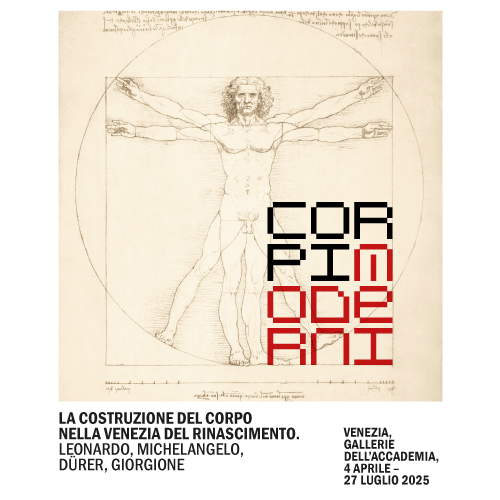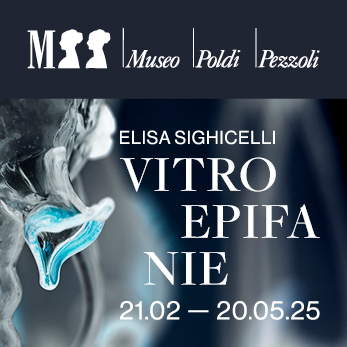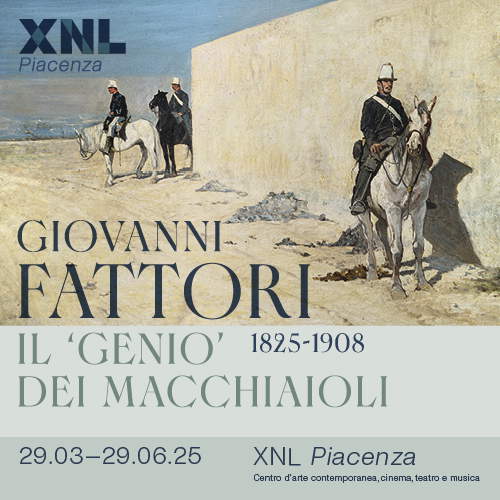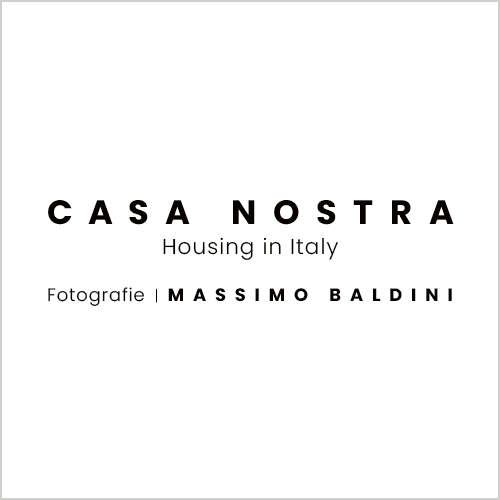Dual Nature: nature and its double dimension in the works of Bardino and De Molfetta
From March 18 to May 15, 2025, AreaB Gallery in Milan is hosting an exhibition that explores the relationship between nature and art through the contrasting visions of two contemporary artists-Antonio Bardino (Alghero, 1973) and Francesco De Molfetta (Milan, 1979). The exhibition, entitled Dual Nature, is curated by Giuseppe Frangi and presents a series of works that confront the natural subject from two divergent but complementary perspectives. The approximately 20 works on display, recently produced and mostly unpublished, range between painting and sculpture and are made in different sizes, from small to large. Bardino and De Molfetta’s works relate to the natural element as a material that becomes a vehicle for expressing a broader and sometimes ambiguous vision of reality. Their approach merges into a reflection on artifice and the transformative power of art, where nature itself becomes a metaphor for a world that slips between reality and fiction, between the controlled and the uncontrollable.
Uniting the two poetics is the expressive force of the signs that characterize their respective works: Bardino’s brush and De Molfetta’s touch manage to convey a vital energy that strikes the viewer, stimulating contrasting emotions. De Molfetta’s sculptures and Bardino’s paintings are, in fact, united by their ability to go beyond the surface of their subject, engaging the viewer in an experience that awakens new emotional and interpretive paths. The exhibition, which will be accompanied by a catalog published by Vanillaedizioni with a text by curator Giuseppe Frangi, will be held at AreaB Gallery in Milan, Via Passo Buole 3, with an official opening on March 18, 2025 at 6:30 p.m. Visiting hours are Monday through Thursday from 10 a.m. to 6 p.m., Fridays from 10 a.m. to 5 p.m., and Saturdays the exhibition can be visited by appointment.
Antonio Bardino and sculptural painting.
Alghero artist Antonio Bardino, known for his pictorial research that explores nature with an approach bordering on hyperrealism, offers in this exhibition a cycle of works that seem to transform the environment into a place suspended between the natural and the surrealist. His large canvases bring the viewer into a close encounter with the natural subject, transformed into something beyond mere observation. An emblematic example of this tension is the work Resistances of 2024, an oil on canvas depicting agave leaves, whose shapes and details appear as realistic as they are artificial, challenging visual perception and inviting the viewer to confront the intensity and vitality of a nature bursting out of pictorial space.
Bardino’s work is characterized by an intense exploration of matter and form. In particular, the artist succeeds in constructing an image that plays on the boundary between the natural and the artificial, using the sculptural brush that defines every detail of his works with almost surgical precision. His pictorial research focuses mainly on those aspects of nature that are more impervious, but also more fascinating and mysterious, such as plants that, although taken from a natural context, seem to move away from it to enter a new dimension.
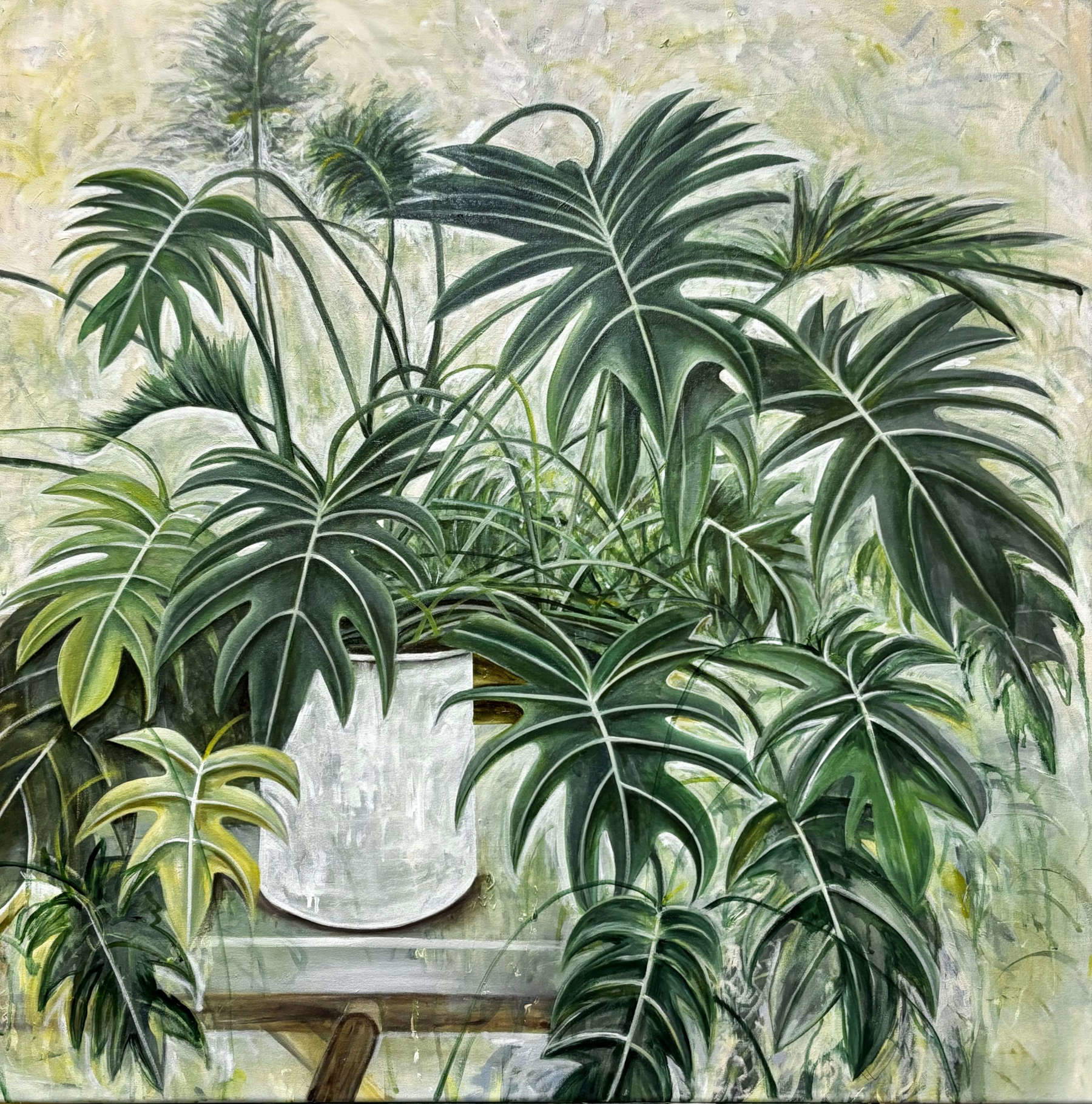
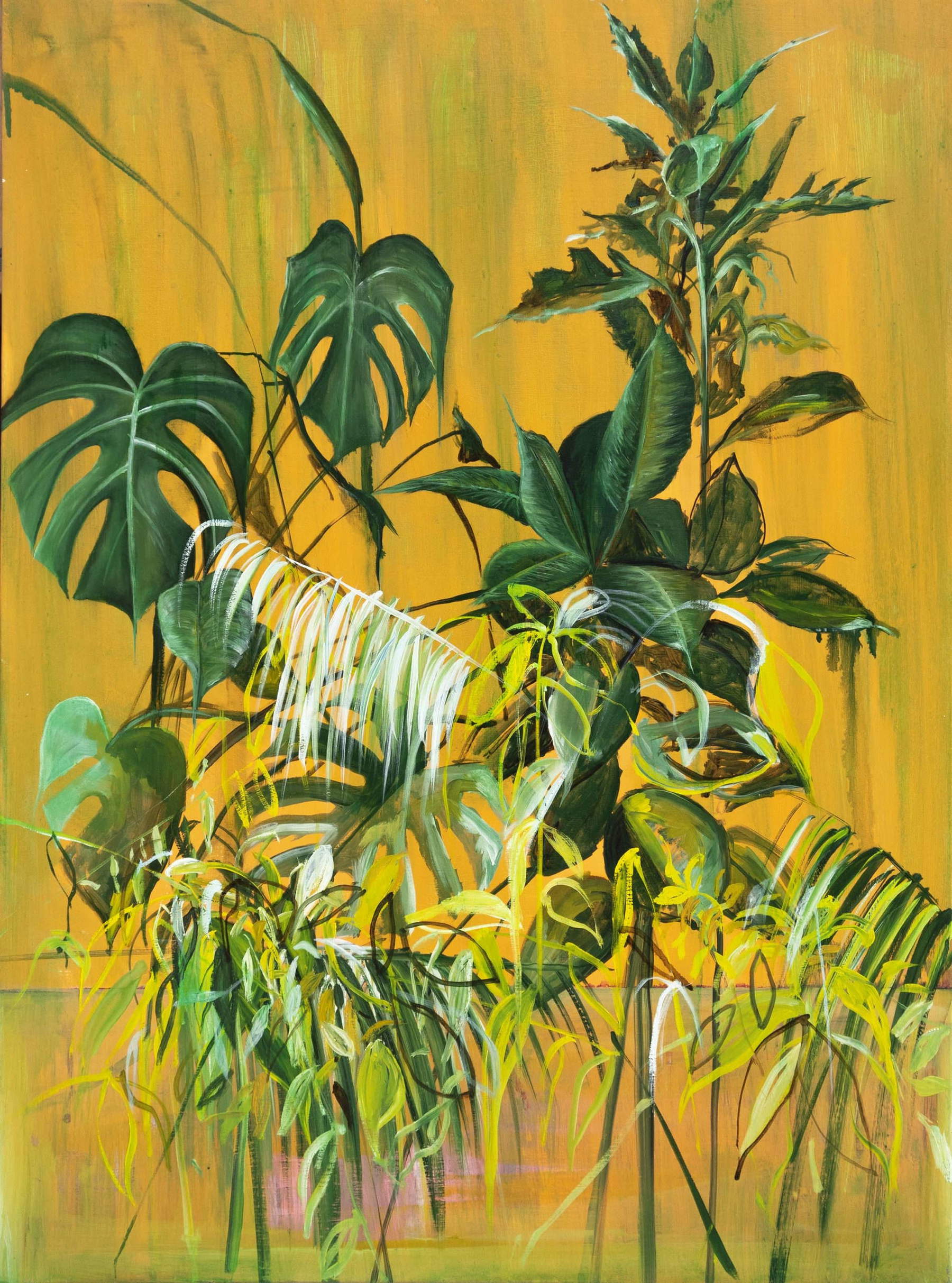
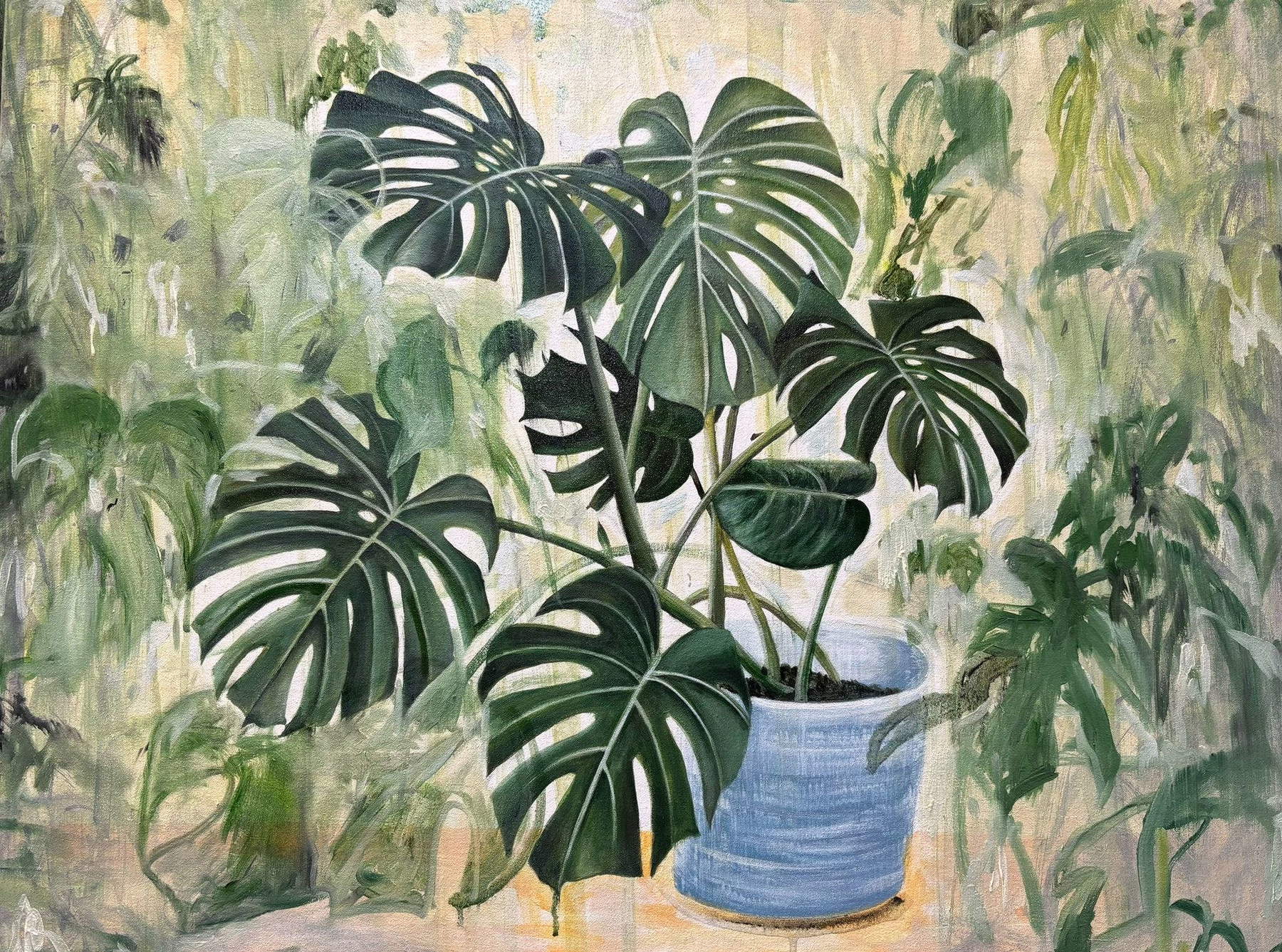
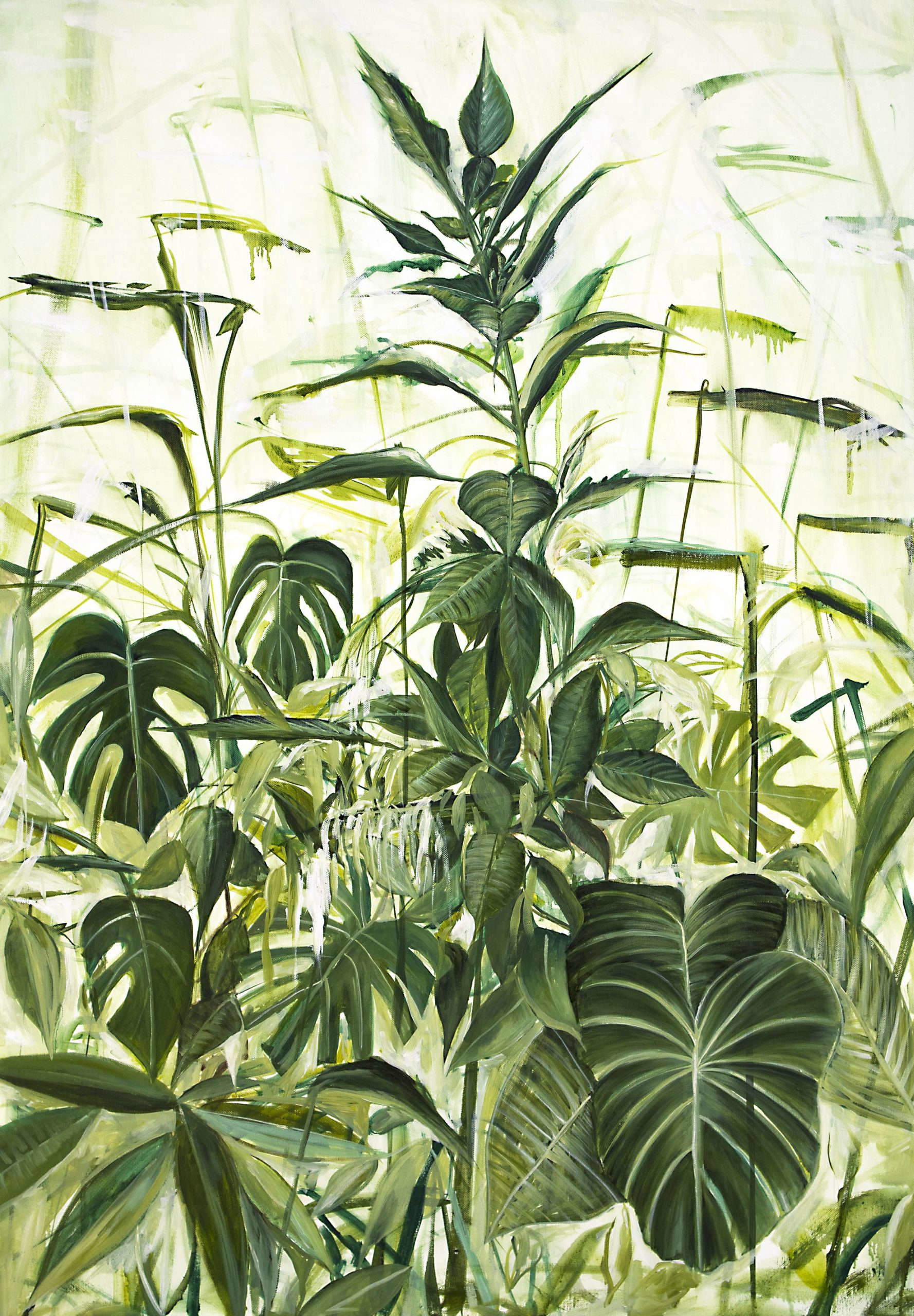
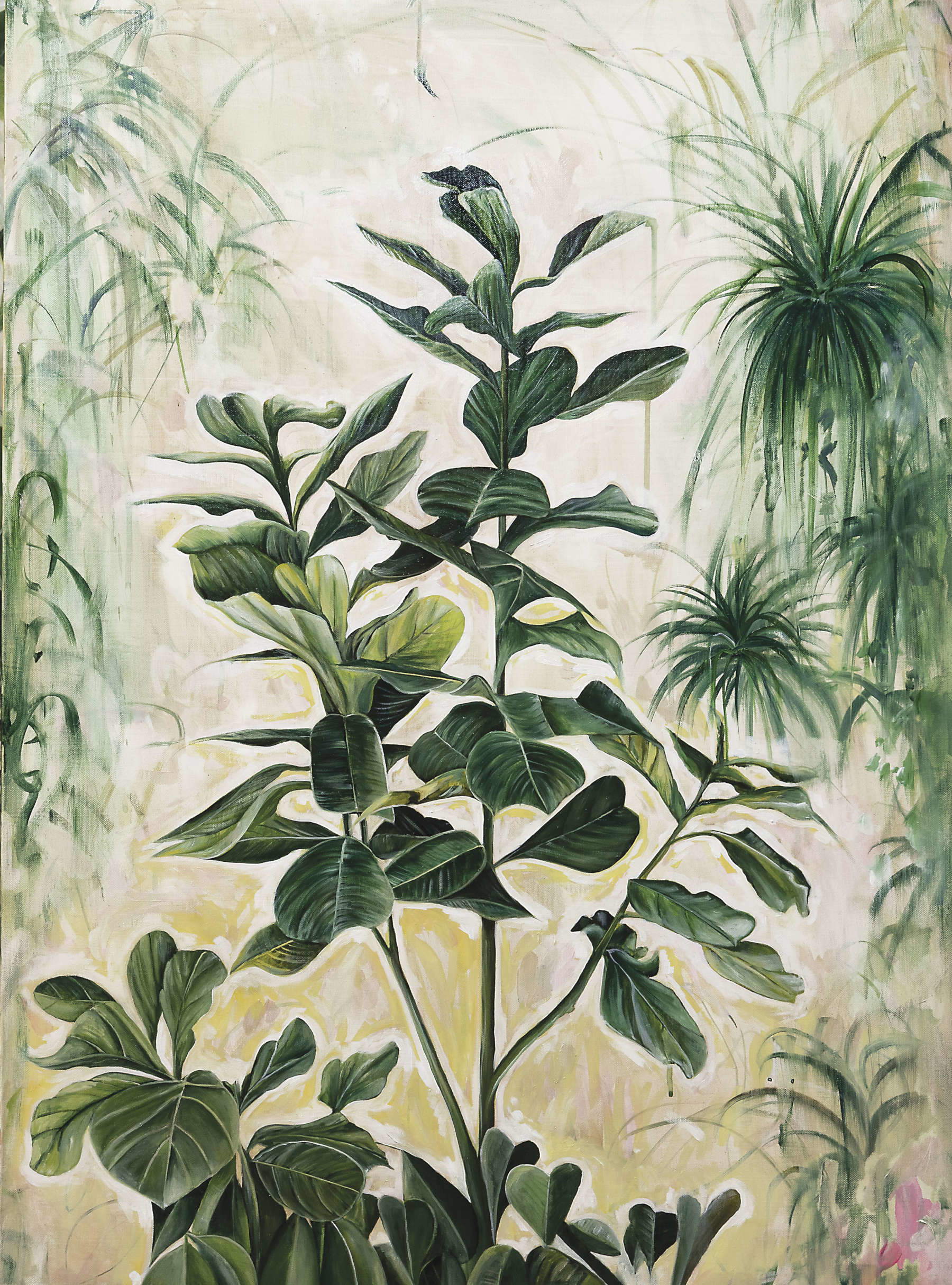
Francesco De Molfetta and Pictorial Sculpture.
If Bardino plays with painting to create sculpture in two dimensions, Francesco De Molfetta responds with pictorial sculpture, using ceramics to construct forms that seem to come straight out of the imagination. His sculptures, which appear as living creatures, are the result of an analysis of the natural element that pushes him to treat ceramics with an expressive freedom rare for this material, traditionally associated with more static and austere forms.
In De Molfetta’s works, as in Puffany & Co, ceramics becomes playful, transformed into an almost living material, ready to change at any moment. In this sculpture, the natural and imaginary worlds intermingle: on a clod of grass, almost surrealistic in its unrealistic glazed green, a scene takes place that evokes the world of the Smurfs, a well-known figure in popular culture. This contrast between the solid material of ceramics and the imagery that animates it is one of the most fascinating features of his research. De Molfetta uses ceramics as an expressive language that allows him to bring to life fantastic creatures that seem to escape from reality and project themselves into a dreamlike dimension. His sculptures are dynamic, enriched with surprising details that make them fascinating and disturbing at the same time, as if each object had its own soul and its own will to transform into something else. The interplay between fantasy and reality is always present in his work, in a continuous shift of meaning that invites the viewer to confront an unexpected vision of nature.
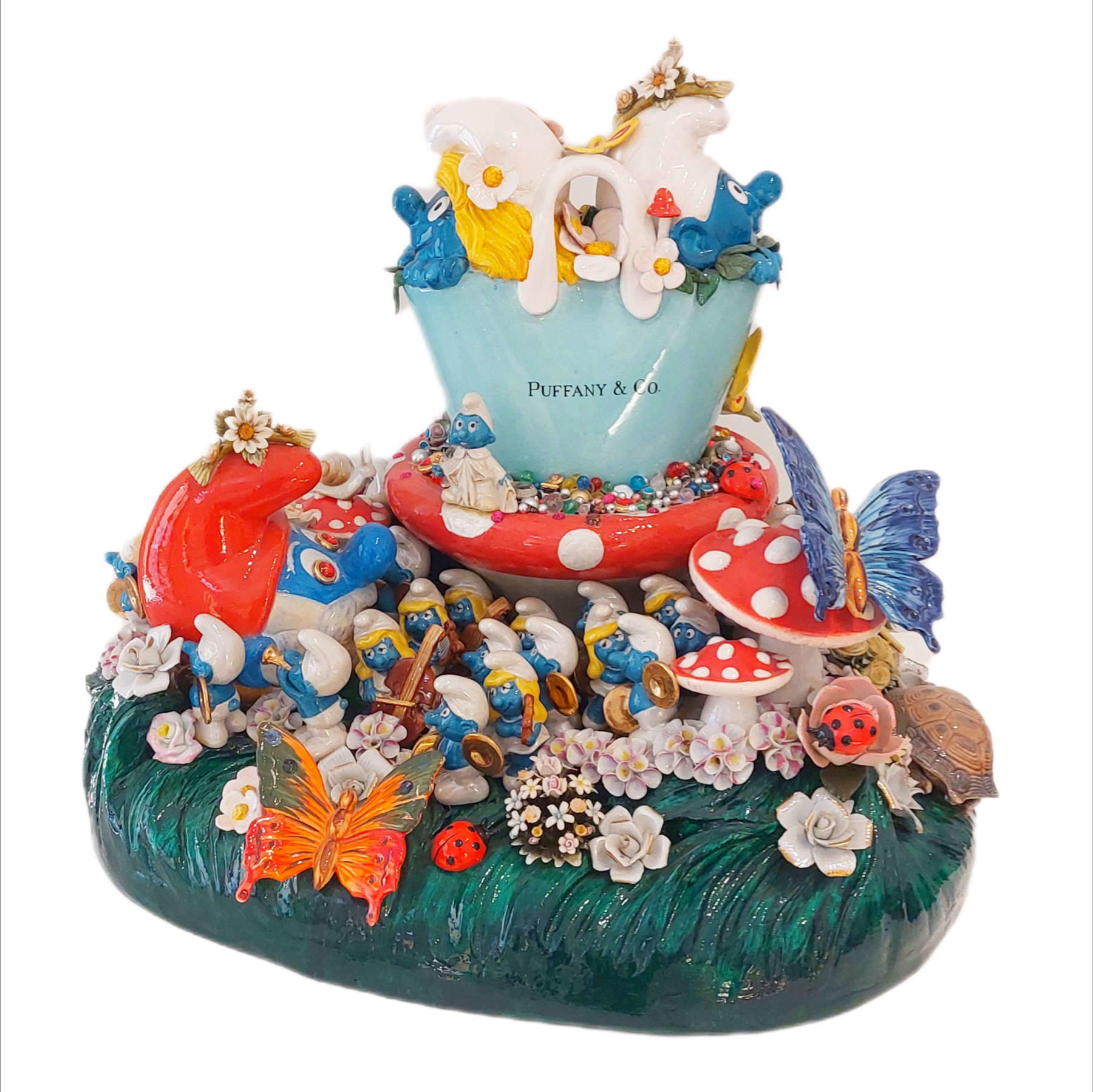
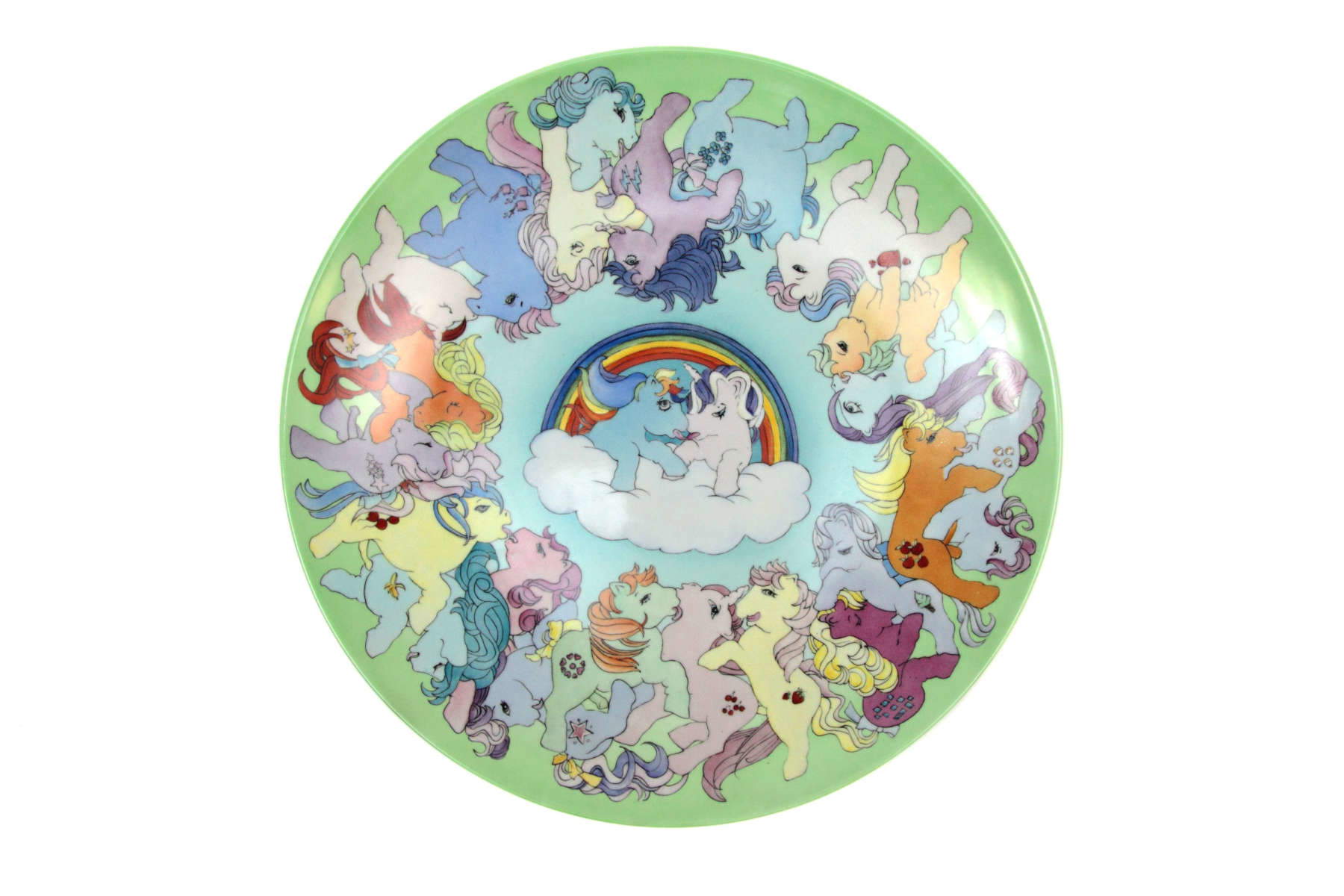
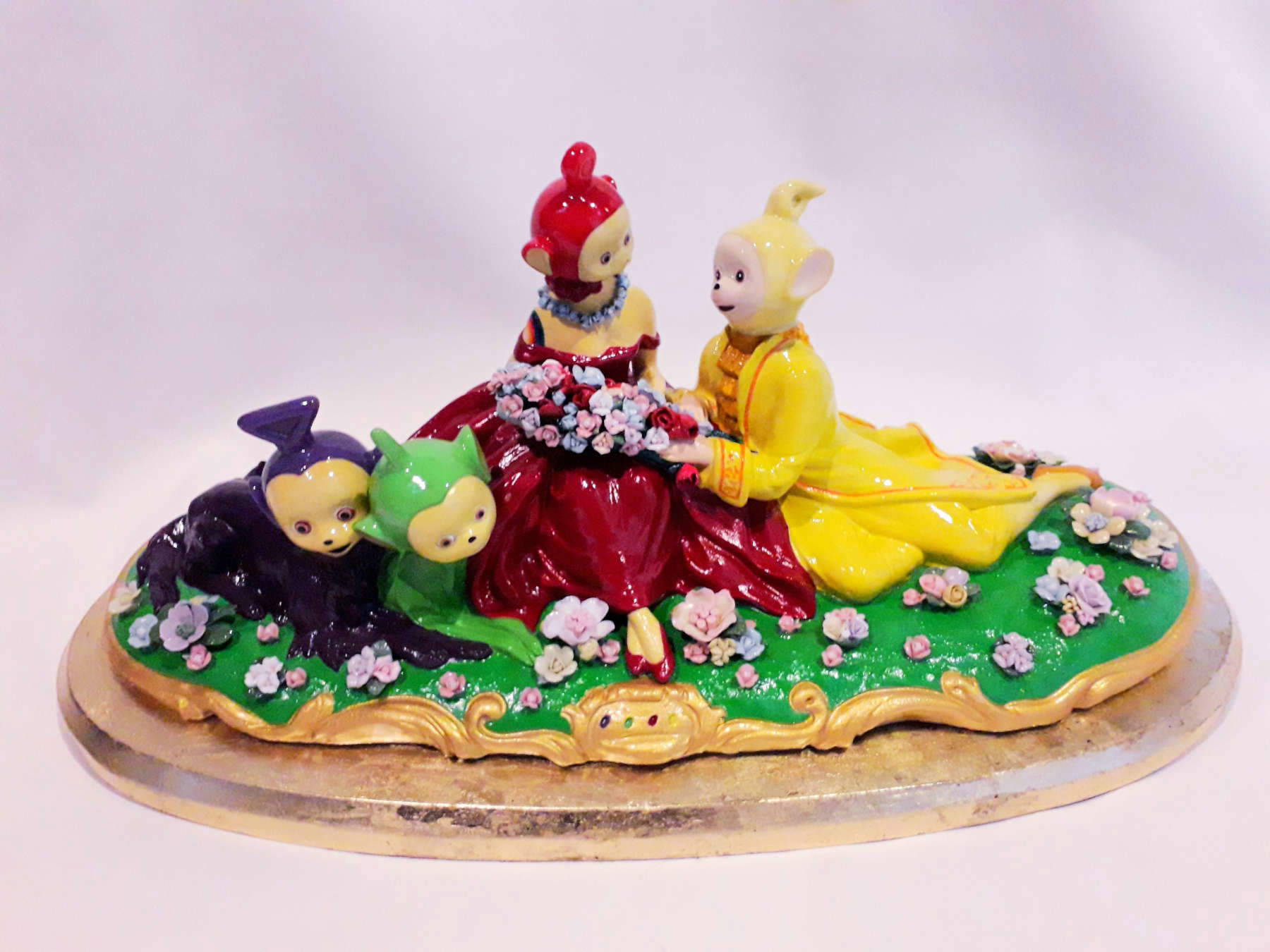
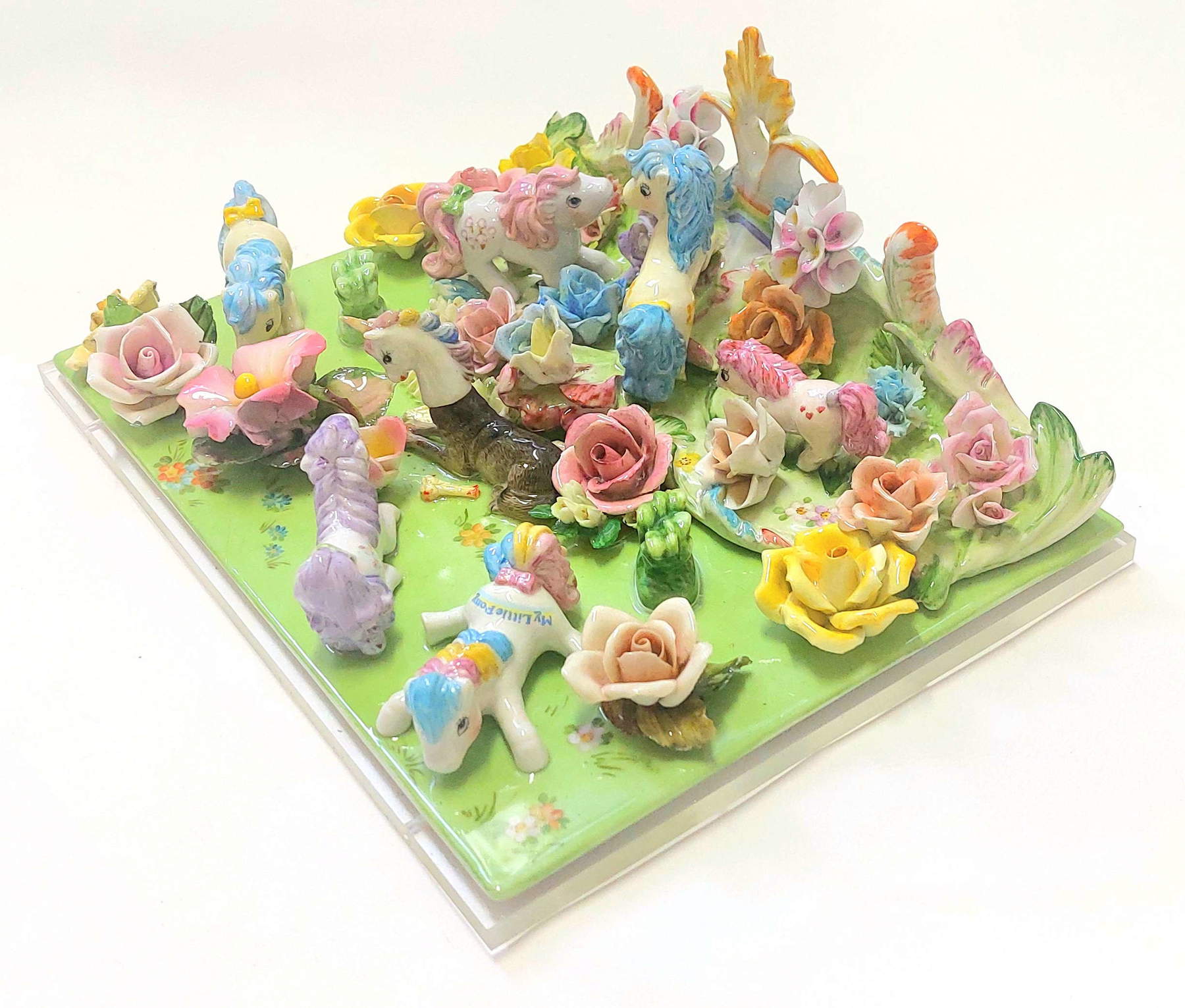
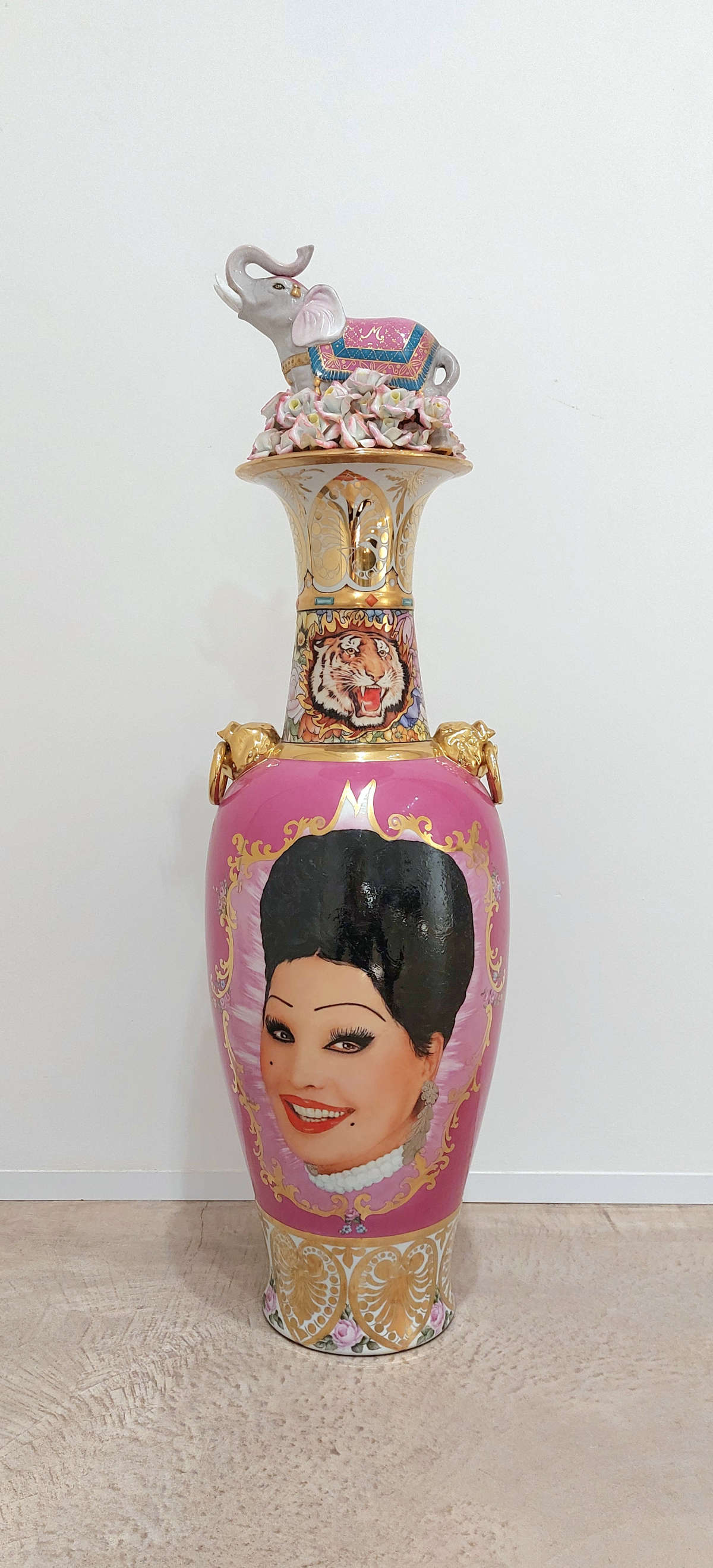
Notes on the artists
Antonio Bardino was born in Alghero in 1973 and initially trained at the F. Costantino in his hometown, and then continued his studies at the M. Sironi Academy of Fine Arts in Sassari, in the School of Decoration. His artistic career was enriched by his frequentation, during his student years, of the artist Enrico Baj, a leading figure in the Italian art scene, known for his eclectic style works, ranging from painting to sculpture, but especially for his deep inclination toward experimentation. The bond with Baj, which lasted until his death in 2003, marked a turning point in Bardino’s life and artistic research, lending a pataphysical and conceptual imprint to his production. A significant event of their collaboration is the pataphysical baptism on Nov. 16, 1986, which represented the young artist’s entry into a new creative universe of meaning games and parallel worlds.
In the years following his training, Bardino devoted himself to experiments in various fields of art, including mosaic and graphic design, but it was mainly in his pictorial works that his language evolved, becoming increasingly personal. His move from Alghero, where he spent his youth, to Udine marks a turning point in his research, fueled by the exploration of themes of nature and contemporary interiors. Bardino’s work is distinguished by the intense relationship he establishes with the natural world, treated with a hyperrealism that does not renounce a certain artificial tension. Plants, a recurring element in his works, become a symbol of an elusive and not totally controllable nature, which creeps into the domestic space, creating a tension between order and chaos. Bardino has participated in numerous awards and competitions, including the Premio Lissone and the Premio Combat, and has been a finalist in prestigious events such as the Premio Celeste and the Premio Rugabella. He has exhibited in numerous galleries both in Italy and abroad, consolidating his position in the field of contemporary painting.
Francesco De Molfetta was born in Milan in 1979 and began his artistic career in a rather eclectic way, exploring different media and techniques. His art was discovered by the well-known gallery owner Franco Toselli, one of the main protagonists of the Arte Povera movement, who introduced him to the most important art circuits since the early 2000s. His career took off rapidly, with exhibitions in Italy and abroad at major international art fairs, as well as in museums and private galleries in Europe and around the world. In 2013, a highlight for De Molfetta was his participation in an exhibition at the L.A. MOCA (Museum of Contemporary Art in Los Angeles), where he exhibited in a context dedicated to the New Pop and Surrealist art scene. This encounter with the American public sanctioned the international recognition of his work. Among his best-known works is the provocative sculpture Lourdes Vuitton, a work that mocks religion and consumer society, which was exhibited at the Sacred Art Biennial. De Molfetta is known for his irreverent and ironic approach, pushing the boundaries of contemporary art through the fusion of tradition and innovation, and his work explores themes such as identity, power, religion and consumerism.
The artist has collaborated with prestigious brands, such as Nike, Fender and Lamborghini, creating works that question popular culture and its symbols. His participation in major international art events, such as the Tolentino Biennale and the Milan Triennale, has consolidated his presence on the contemporary scene. He has also directed and written short films that have won awards, including one that won the Ambrogino d’Oro as best short film about the city of Milan. In 2017, De Molfetta exhibited a solo room at the Milan Triennale Museum, one of Italy’s most important cultural institutions, and has been involved in numerous exhibitions in museum settings and galleries around the world, taking his work beyond European borders. He teaches Aesthetics of Contemporary Art at the Humanitarian Society in Milan.
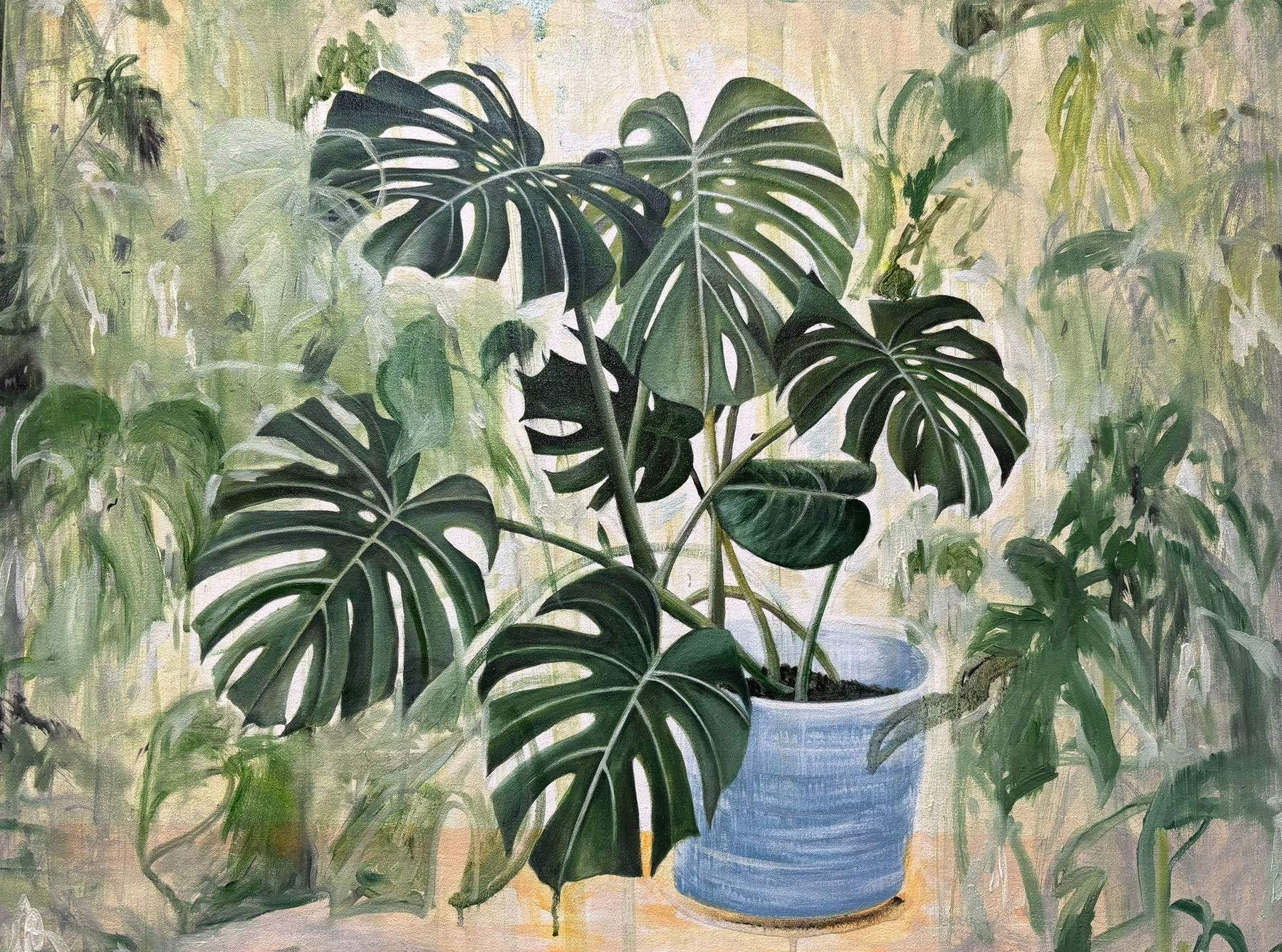 |
| Dual Nature: nature and its double dimension in the works of Bardino and De Molfetta |
Warning: the translation into English of the original Italian article was created using automatic tools. We undertake to review all articles, but we do not guarantee the total absence of inaccuracies in the translation due to the program. You can find the original by clicking on the ITA button. If you find any mistake,please contact us.





